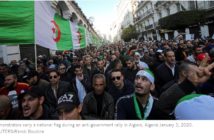FOREIGN POLICY
Posted By Marc Lynch
Last week’s scenes of angry mobs besieging America’s embassies in Egypt, Libya, Yemen and Tunisia, and of one of its finest diplomats dead in the streets of a country he had helped to liberate understandably shocked and horrified Americans. Sensationalist media outlets rushed to exploit the moment, politicians pounced prematurely, and pundits reached for their great book of cliches about the roots of Muslim rage. Somewhere, I have no doubt, a great global assembly of strawmen is convening for anxious discussions about why they had been targeted for burning. This despair is wildly premature. The embassy attacks do not present the “true face” of the Arab uprisings. They do not mean that the hopes for democratic change have failed, and we have not entered an “Islamist Winter.”
The crisis isn’t over, of course. Small numbers of protestors continue to rage as the cycle unfolds across the world, and cynical politicians desperate to revive their flagging fortunes are banging the drums of outrage (no, no, I meant Hezbollah’s Hassan Nasrallah). But after one week I am struck by the significant differences between 2006 and 2012 in how Arab and American publics have responded to the cycle of outrage. This week, a wide range of prominent leaders and ordinary citizens publicly rebuked the attacks on U.S. Embassies, and have denounced the riots (even if many continue to voice their right to criticize the anti-Islamic film). The protests, most of which were rather small in the first place, have in most places largely sputtered out, in part because key Islamist forces decided that their interests were better served by restraint than by escalation. What is more, a very significant number of Arab voices complained publicly over their peers demonstrating over an obscure film rather than over the slaughter in Syria or serious domestic challenges in their countries. I do not remember any similar backlash in 2006. (Please do check out the #muslimrage hashtag on Twitter for a fine outburst of humor over the attempt to gin up a new clash of civilizations.)
This is not to say that there has been some great outpouring of pro-American sentiment masked by the angry crowds shouting “Death to America.” American foreign policy is as unpopular as ever, and the anger over this ridiculous film appears to be widespread and real. But the Arab uprisings have empowered multiple, competing voices which will not easily cede the stage to the old forces of Islamist outrage. And without dictators to fan the flames behind the scenes and then shut things down when they went to far — the game perfected by the Mubaraks, Salehs and Assads of the world over too many years — even the Islamists with seemingly the most to gain politically by fanning the flames of fury seem to have realized the need for restraint. Finally, thanks to social media links forged between Arab journalists and activists with American journalists and ordinary citizens over the last two years, there may be less dependence on “official” narratives and more opportunities for non-extremists to make themselves heard. Indeed, the real story of last week may utlimately be that it has become harder, not easier, to spark and sustain these “clash of civilizations” dynamics in the wake of the Arab uprising.
The comparison to the Danish Cartoons crisis helps to separate out what might be unique either to the Arab uprisings or the Obama administration’s policies. The Danish cartoons crisis took place under the Bush administration, well before it began its much needed course correction by replacing Donald Rumsfeld with Robert Gates and sidelining Dick Cheney later in 2006. The Bush administration was still in full-on Global War on Terror mode at that time, still occupying Iraq, still deploying all the bold and resolved rhetoric in its arsenal. And it took place at the height of Arab authoritarianism, when all those friendly secular dictators were comfortably in their palaces. Despite those two key differences from today, the initial outbreak of the Cartoons crisis looked a lot like last week’s crisis — but the subsequent dynamics did not.
Then, as now, a group of Islamist activists brought obscure, local images portraying Mohammed from the West to the Middle East, and then opportunistic extremists used them to whip up a global frenzy. A number of Arab regimes tacitly or overtly supported the escalation of the protests. Several (mostly) Danish Embassies were torched, and over a hundred people were killed. In the subsequentStupid!Storm, Islamist leaders competed to outbid each other in the rhetorical fury of their denunciations, while those leaders (such as the televangelist Amr Khaled) who timidly tried to de-escalate the crisis were roundly denounced. Protests went on for weeks. The middle ground almost completely disappeared, as the extremes drove the debate and gloomy notions of a “clash of civilizations” gained ever wider currency, to al-Qaeda’s delight.
Last week’s sudden eruption began in a similar way, but then took a different path. The initial steps look similar, from the discovery of an obscure media insult to Islam by opportunistic Islamists through the rioting outside Embassies. The rapid outpouring of popular outrage and sensitivity to insults to Islam look very similar as well. But equally interesting is what happened next: apologies and condemnation of the attacks (some more grudging than others) from elected leaders, popular demonstrations in a number of Arab countries against the violence, and widespread pushback in Arab public debates against the attempt to hijack popular anger.
In Libya, almost every elected official rushed to denounce the attacks and apologize for American losses. Vigils and protests against the violence broke out across the country, with Libyans rushing to tell Americans that the attackers did not represent Libya or Islam. The killings in Libya revealed not a latent anti-Americanism, but the ongoing lack of state capacity. If it does turn out that Stevens was killed in a well-planned attack by al-Qaeda in retaliation for the killing of Abu Yehya al-Libi, this point would stand even more strongly. American and Libyan leaders alike quickly agreed that the appropriate response was even closer cooperation to disarm militias, built a functioning state, and complete the democratic transition.
Such responses did not only occur in Libya. Similar apologies from national leaders and denunciations of the violence by NGOs and activist groups quickly occurred in Yemen, despite the serious hostility towards American foreign policy prevalent there and the popular hostility to the deployment of US Marines to protect the Embassy. “Nothing is more disgusting than watching a small group of reckless people trying to hijack the extraordinary image of Yemeni protestors throughout more than a year of peaceful struggle,” complained one Yemeni activist. Tunisia’s government has promised to quickly crack down on the leaders of the attack on the Tunis Embassy. Protests in most other Arab countries proved to be small and marginal, their importance magnified by media scrutiny: a few hundred here and there, not hundreds of thousands taking over the streets. The expected surge of protests last Friday largely failed to materialize, and by Saturday the wave already appeared to have crested and the streets calmed down. Even Yusuf al-Qaradawi, who had played a key role in pushing rage over the Danish Cartoons into the mainstream in 2006 and who clearly wanted to score points off this latest opportunity for manufactured outrage, came out against attacking embassies.
The sharpest challenge came not in Libya, but in Egypt. The original protests had been organized by salafis, after the airing of the film clip on one of their satellite television stations (a human rights lawyer has now filed suit against them). But the small number of Egyptians involved in violent clashes outside the Embassy in the following days were mostly young punks with no discernible ideology beyond hatred for the police. These were neither Islamists nor the activists of the early days of Tahrir Square, but the violent anarchists who had dominated the clashes in the final months of 2011. The popular anger over the perceived insult to Islam, the dominance of intra-Islamist political competition in driving behavior, and the widespread hostility to the United States were nonetheless real and posed a significant challenge to the future of the U.S.-Egyptian strategic alliance. The near-complete absence of any Egyptians willing to stand up for the United States during the crisis stood in stark, depressing contrast to the outpourings of popular sympathy from Libya to Yemen. No vigils for American victims were organized in Cairo of which I am aware (please correct me if I’m wrong).
But despite all of this, Morsi, who initially disappeared and would likely have preferred to ride the wave of a cheap and popular issue, quickly discovered the need to calm things down in order to maintain working relations with the West. After a sharp private exchange with Obama and several pointed public American remarks (Obama’s “neither an ally nor an enemy” comment was very clearly a message and not a gaffe), Morsi stepped forward with a televised addressapologizing for the violence. The Muslim Brotherhood withdrew its call for Friday protests against the film, which might have dramatically escalated the crisis. Morsi’s grudging but eventually effective response says little about the never-ending debate over the Brotherhood’s “true” intentions, but much about how its behavior is shaped by pressures and opportunities.
The violence last week therefore meant less than initially met the eye but did point to several important points. The Arab uprising opened space for all forms of political activism, including many strands of Islamism and nativism. The salafi organizers of protestors against the film did take advantage of the same opportunities to organize, mobilize and communicate their grievances as did other activist groups. Such mobs can do considerable damage, especially where state institutions are weak and can’t reliably maintain security (Libya, Yemen). Islamism has been transforming Arab public culture for generations, creating ample opportunities to mobilize people in the face of such manufactured outrages. Almost every Arab transition has struggled to deliver on its early promise, leaving a vast reservoir of frustrated, angry youth ready to be mobilized into protests and demonstrations. Islamists have taken over increasing political space in much of the region, keeping such issues ripe for mobilization. Empowered publics and a tightly interconnected media space do ensure the rapid diffusion of ideas and protest movements across the entire region. And the Arab uprising did contain a powerful element of popular opposition to the American role in the region, not only among Islamists, rooted in decades of U.S. policies which have not been forgotten.
But there’s so much more to it than that. The Islamist protestors using the YouTube film to whip up outrage are only one small voice in a contested, turbulent new public sphere. The new Arab public is far more diverse and self-confident today than it was six years ago, and able and willing to push back against simplistic interpretations. Political jockeying between Muslim Brothers and salafis in transitional countries may create incentives for outbidding on Islamic issues, but the political arena — both at home and abroad — offers more countervailing forces and pressure points. Leaders of transitional governments have different political interests than did the old dictators, as do Islamist movements now struggling with the exercise of power amidst ongoing institutional crisis and polarized politics. There are certainly plenty of people and movements on both sides who yearn for a return to the simple politics of a clash of civilizations, but there are many more who are manifestly impatient with such dichotomies and now have the political space to reject them.
The protests last week, particularly the killing of Chris Stevens and his colleagues, were a horrible moment for America and for the Middle East. But it is far too soon to give up on the promise of the Arab uprisings. Nobody thought that fundamental political change would be easy, that transitions would proceed without turbulence, or that anti-American feelings had simply vanished. But perhaps the end of the crisis matters more than its beginning.
America navigating this turbulent environment will depend in part on bipartisan consensus about the importance of promoting democratic reform in the Arab world. The Obama administration has maintained its poise through a difficult week, despite the crisis abroad and the partisan polemics at home. I only wish I knew whether Romney agreed with him and with the McCains and Kristols of his own party on support for democratic change in the Middle East, or with those trends on the American right who see only Islamist radicalism on the march. Perhaps someone should ask him.
.






